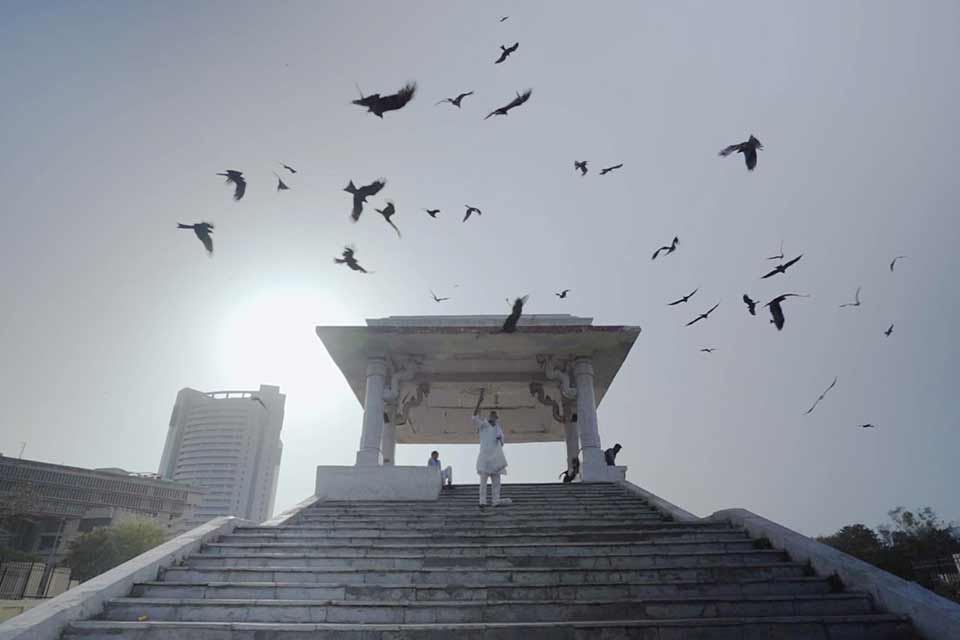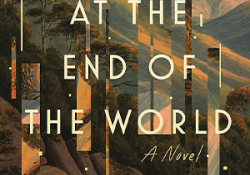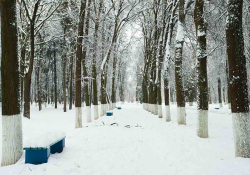Angels over Chattarpur

When long-haired androgynous creatures, flying over Delhi, begin to show up on Snapchat feeds and WhatsApp posts, military measures must be taken.
The first angels appeared in the dust storms. Towers of desert sand spiraling like giant tops over the skyline, balls of dust and dirt riding into the city like animate beings, streams of hot summer wind impacting with the everyday swirl of particulate matter. People saw in them things, giant figures with flapping wings rising through the haze like question marks. It was as if they were asking questions of everyone watching—the arms dealers who had paused while drinking peaty single malt on the nineteenth floor of Hotel Shangri La, the sweat-stained passengers with battered footwear and too many bags on the Yellow line metro cars halted between Mehrauli and Chattarpur, the slender young men and women from the ironing carts standing statue-still in the middle of South Delhi residential colonies with neatly folded, neatly pressed clothes in their arms. But the questions asked by these figures could not quite be comprehended, let alone answered. Have you ever? these figures asked. Did you ever?
An adequate terminology was lacking. Anomalous weather phenomena, the man from Boeing defense contracting said to the man from Lockheed Martin, paused briefly over his Macallan on the rocks at Horizon Club in Hotel Shangri La. Bhut pirait, the people on the metro cars said. Djinn, the pretty ironing girl with the vitiligo marks on her face said. Ghosts, spirits, vampires. The name shots began to find their range. Finally, angels.
The name, angels, wasn’t well received in the public sphere. Angels were un-Indian, antinational. They came from a Semitic cosmology. Angels belonged to Jews, to Christians, and this was a particular problem in India, to Muslims. They did not belong to Hindus. Perhaps the great scholar Dr. P. N. Oak, who had written books claiming that the Taj Mahal was a Hindu temple, that the Kaaba in Mecca was a Shiva linga, and that Jesus was really Krishna, could have made a case for angels actually being Hindu. But Dr. Oak was dead, and no one had taken his place yet. Angels remained Semitic foreigners.
So, why were they flying over Indian airspace? On the show The National Interest, the glossy-haired news anchor cited polls showing that 87 percent of Indians were against the use of the term angels to describe these entities appearing over the skies of Delhi. Retired generals bristling with medals and moustaches were brought in to debate the matter, along with best-selling authors with tikas on their foreheads and members of think tanks with sharp tieless suits and American accents. They could be called Gandharvas, the author of a popular mythology series suggested, giving them distinctly Indian and Hindu roots. But people pointed out on social media that Gandharvas also existed in Buddhist cosmology and so could be found in foreign nations to the east where they were considered the lowest order of celestial beings. The name Gandharvas did not catch on, but perhaps for no greater reason than that it involved too many syllables for the age of instant media.
There were some people, liberals or secularists, what the right wing called “libtards,” who protested the sectarianism of rejecting the name angels but also critiqued the entrenched superstitious habits that allowed people to see dust tornadoes as celestial or divine. Such phenomena were a result of environmental degradation, they said. A few, more extreme than the liberals, said that this was our punishment for worshipping money and power, that these phenomena were the harbingers of doom, nature’s vengeance for the water tapped out, for the air polluted, for the land ravaged.
Photos and videos began to appear on social media, on television, in newspapers. The angels were seen well beyond Delhi now. They appeared in cyclone corridors running up through Kolkata toward northeast India and in depleted monsoon winds retreating through the Deccan toward the Western Ghats. An angel was seen over the Taj Mahal on a moonlit night, spreading its wings over the white central dome that Dr. Oak claimed was an intrinsic part of the ancient Hindu temple called Tejo Mahalaya and that had been repurposed into a mausoleum by Muslims. Another angel was observed by passengers on an aircraft going from Mumbai to Kochi, flying alongside them with wide eyes locked on the passengers as if there was some message it was desperate to convey to them before they landed and checked on work emails, share prices, and WhatsApp messages.
Blurry images and recordings of these androgynous creatures with long hair could be seen on Snapchat feeds and WhatsApp posts alongside the usual bloody images of people being beaten to death. An impression of wings. Eyes wide, full of surprise. Eldritch keening noises rising above the sound of the wind. The images were usually followed by a trail of abusive commentary. Inevitably, Pakistan came up. They were sending angels to fight us?
Soldiers from NATO and the European Expeditionary Force attempted to engage the angels in firefights.
Then reports of angels began to come in from Pakistan and from Afghanistan. In Pakistan, Islamist groups denied they were angels. They called them blasphemous emanations, un-Islamic entities, psyops tricks created by the Indian agencies. In Afghanistan, soldiers from NATO and the European Expeditionary Force, back again, attempted to engage the angels in firefights. They called in air support, Hellfire missiles arcing toward these aerial creatures. The giant figures vanished when attacked. When not under threat, they did nothing except ride the winds, always looking surprised.
Someone quoted the German Jewish philosopher Walter Benjamin, dead by his own hand in Port Bou, Spain, while trying to escape the Gestapo. The Angel of History. Yet was there anything in common between Benjamin’s thesis on angels and the angels observed over the Indian subcontinent except, perhaps, for the surprise in their eyes? Benjamin had written, “A Klee painting named Angelus Novus shows an angel looking as though he is about to move away from something he is fixedly contemplating. His eyes are staring, his mouth is open, his wings are spread. This is how one pictures the angel of history. His face is turned toward the past. Where we perceive a chain of events, he sees one single catastrophe which keeps piling wreckage upon wreckage and hurls it in front of his feet. The angel would like to stay, awaken the dead, and make whole what has been smashed. But a storm is blowing from Paradise; it has got caught in his wings with such violence that the angel can no longer close them. This storm irresistibly propels him into the future to which his back is turned, while the pile of debris before him grows skyward. This storm is what we call progress.”
The angels began to disappear as Pakistan and India followed the example of NATO, scrambling fighter aircraft when they appeared. Then one day, in the back channels of the deep state, rumors began to circulate. An angel had actually been shot down near the northeastern territories of India. Had it been the Chinese, or was it an Indian Air Force fighter aircraft that had the right to claim the kill? The borders there, drawn more than a century ago by a British administrator called McMahon, were ambiguous. Landmarks changed with seasons and with snowfall, and both China and India had contending claims on the territory. Indian teams were dispatched to secure the area where the angel had fallen, racing to reach their objective before the Chinese.
None made it to their destination, not the Indian units and not the Chinese. Follow-up expeditions, better equipped, more heavily armed, had no greater success. It was not possible to penetrate the area where the angel had supposedly fallen. The area was given a name: the Zone. Forward observation posts were set up as close to the Zone as possible.
Reports of shifts in the time-space continuum in the Zone were dismissed as resulting from altitude sickness in the observers, who were also said to be affected by the remoteness and the hardship of the posting. The Indian national security adviser, whose son ran a hedge fund in London and offshore banks in Mauritius, dismissed the notion that the Zone opened up event horizons, creating overlaps between future and past. He recommended to the generals that observation teams be rotated with greater frequency. He also suggested that a Hindu temple, preferably to Hanuman, the warrior monkey-god, be set up so that the men could find some spiritual solace as they maintained their lonely vigil in a place where mountains blurred into sky.
Jackson Heights, New York












